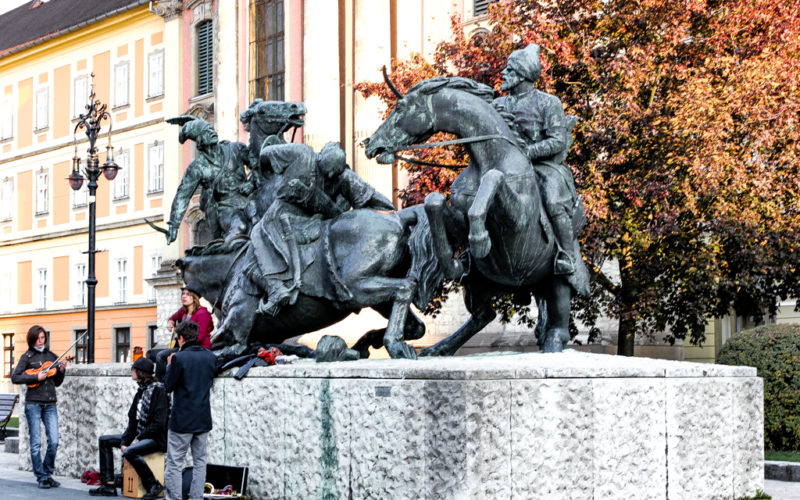Eger is a small town in Northern Hungary mostly famous for its wines. The most popular of them all is the red Egri Bikavér (Eger’s bull’s blood). It’s quite easy to associate this wine with the blood shedded by the inhabitants of Eger during the resistance to the Turkish invasion of the 16th Century. Let me tell you how this indomitable village stopped the advance of the Ottoman towards central Europe for over 40 years.
At the beginning of the 16th Century, the situation in Hungary was not the best. This nation, already of sufferers, was divided in three parts. The western was already part of the Austro-Hungarian Empire, Transylvania was totally isolated and the Ottoman Empire had all the centre and south of Hungary under its mercy.
When in 1541 Buda fell in the Turkish hands, it seemed the end of the magyars as an independent nation was approaching. But there still was a little hope in the North of the country, Eger and its castle. Péter Perényi, owner of said castle at the time and captain of Northern-Hungary decided he needed to build fortifications that could contain the Turkish advance.
Two concentric walls with great battlements and bastions for the cannons were to be the legacy that Perényi left István Dobó when this took over the reins in Eger come 1548. Dobó himself would become key in the defense of Eger, and the main square of the city will carry his name.
Slowly the date of the final outcome would approach. Only four years after Dobó took over an army of approximately 80,000 Turkish soldiers started the siege of Eger. The biggest part of this army (around 60-70 thousand soldiers) was captained by Ahmed, while 10 to 12 thousand were the guard of Ali, the pasha of Buda.
Against them, behind the city walls, only 2,100 fighters. Men, but also women and children. A whole city with the aim to repel one of the strongest empires in history. Petitions of help coming from Dobó had bee rejected and when September 14th the Turkish army was surrounding the castle all seemed to be coming to an end.
But nothing further from the truth. What happened then was so big that 1899’s book by Géza Gárdonyi that tales the story of this resistance, Egri Csillagok (Eger’s stars) is still over a hundred years later mandatory read in school.
After 40 days of siege the weakened Turkish army retreated, completely demoralised to the point that they wouldn’t try again until 1596, more than 40 years later and with over 150,000 soldiers.
That time, the locals could do nothing and soon afterwards even Vienna almost fell to the Turkish hands, but that’s another story.
